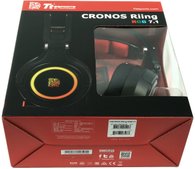 For approx. 80 Euro street price you move on smooth ice, because you already venture into areas where you can already buy really good mid-range headsets. But do USB, RGB and a few technical gimmicks justify this street price? In the recently published article "Cougar Immersa Pro in Test – Headset with Surround and USB Sound Card" we had a very similarly positioned headset in the test, whose software has very interesting parallel seam to the product tested today. But even the software comes in the end only from the modular system of the OEM and hardware providers.
For approx. 80 Euro street price you move on smooth ice, because you already venture into areas where you can already buy really good mid-range headsets. But do USB, RGB and a few technical gimmicks justify this street price? In the recently published article "Cougar Immersa Pro in Test – Headset with Surround and USB Sound Card" we had a very similarly positioned headset in the test, whose software has very interesting parallel seam to the product tested today. But even the software comes in the end only from the modular system of the OEM and hardware providers.
As we test, we have already explained in the basic article "Gaming Headsets: Myth, Truth and How we Test" very detailed and transparent, because with the usual audio-swirl of bass thunderstorms and high-pitched whips you can't really get any further. You have to be able to listen subjectively well and measure at the same time.
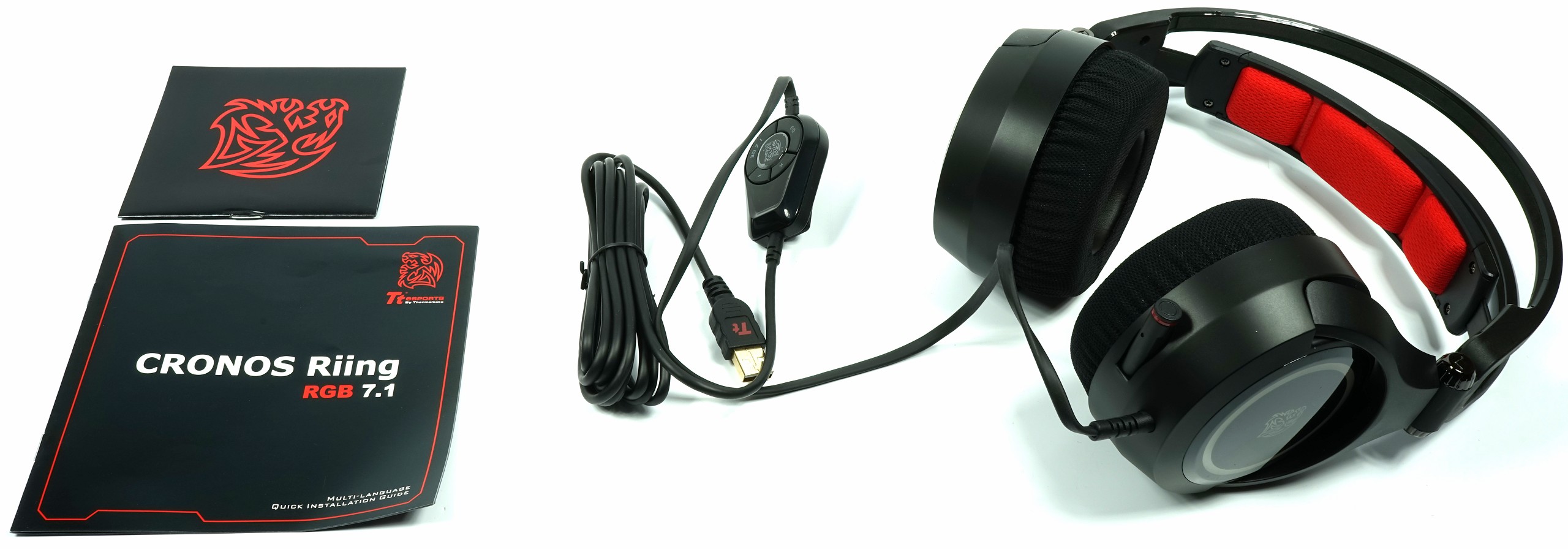
The scope of delivery is clear: the headset, a manual and the built-in USB audio solution as a small control unit with buttons and the mute switch. That's it. The approx. After all, the 2 meter long cable is flat, rubberized and not even rigid in the base.
Optics and haptics
The entire version is dominated by matt black plastic, whereby at least the red upholstery of the headband, the ring on the microphone and the shiny surfaces on the back of the earcup can set a certain counterpoint. Fulminant and conspicuous is not much and that is probably better. Visually you can live with it, no question.
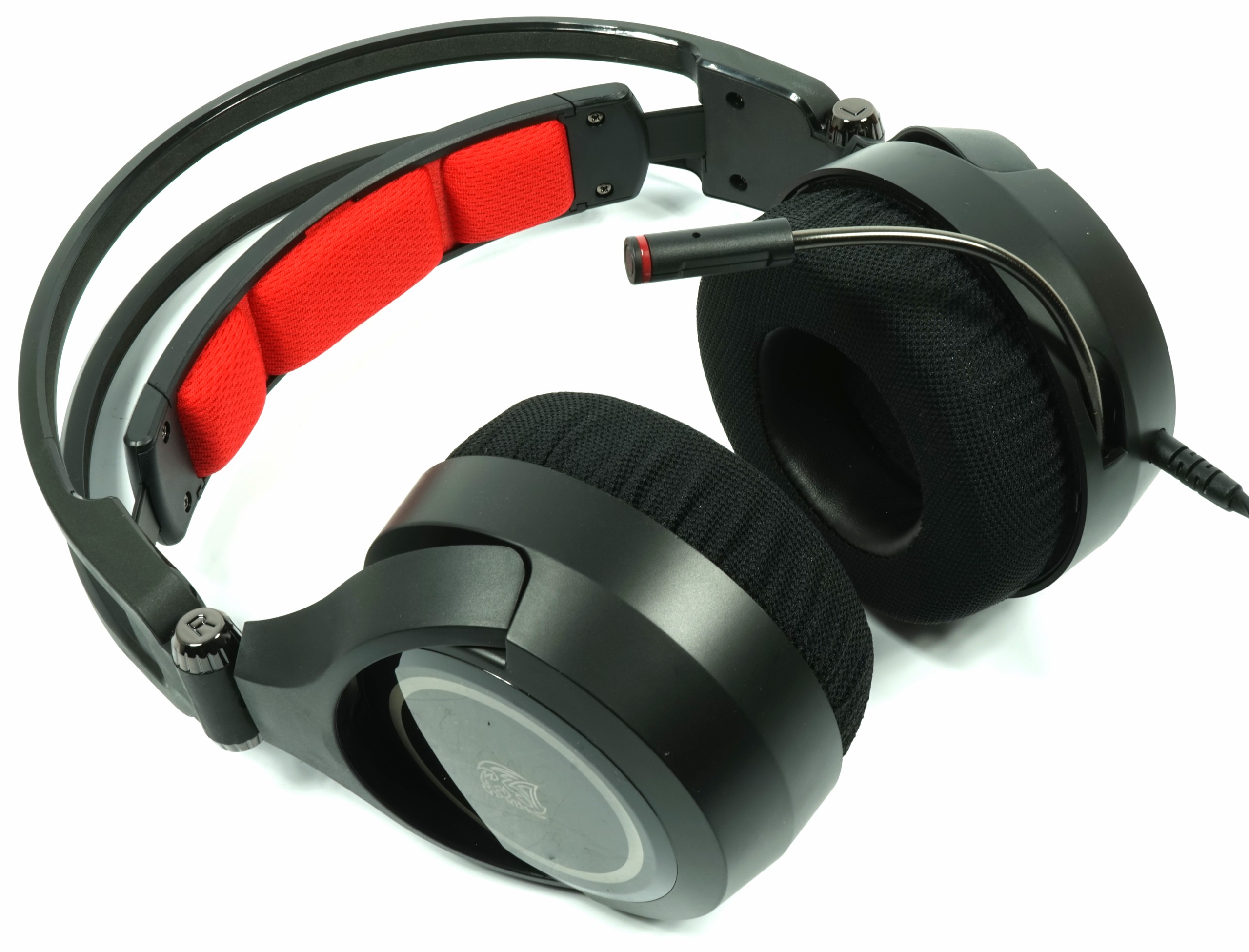
The feel is mediocre, because the plastic doesn't look too cheap, but it still feels like one. Real value does not really radiate all this, even if the overall construction looks reasonably solid. It is only possible to bend what is to be bent, which makes the second handle look better than the first. It's not a hand-flatterer, but it's also not a rattlesnake.
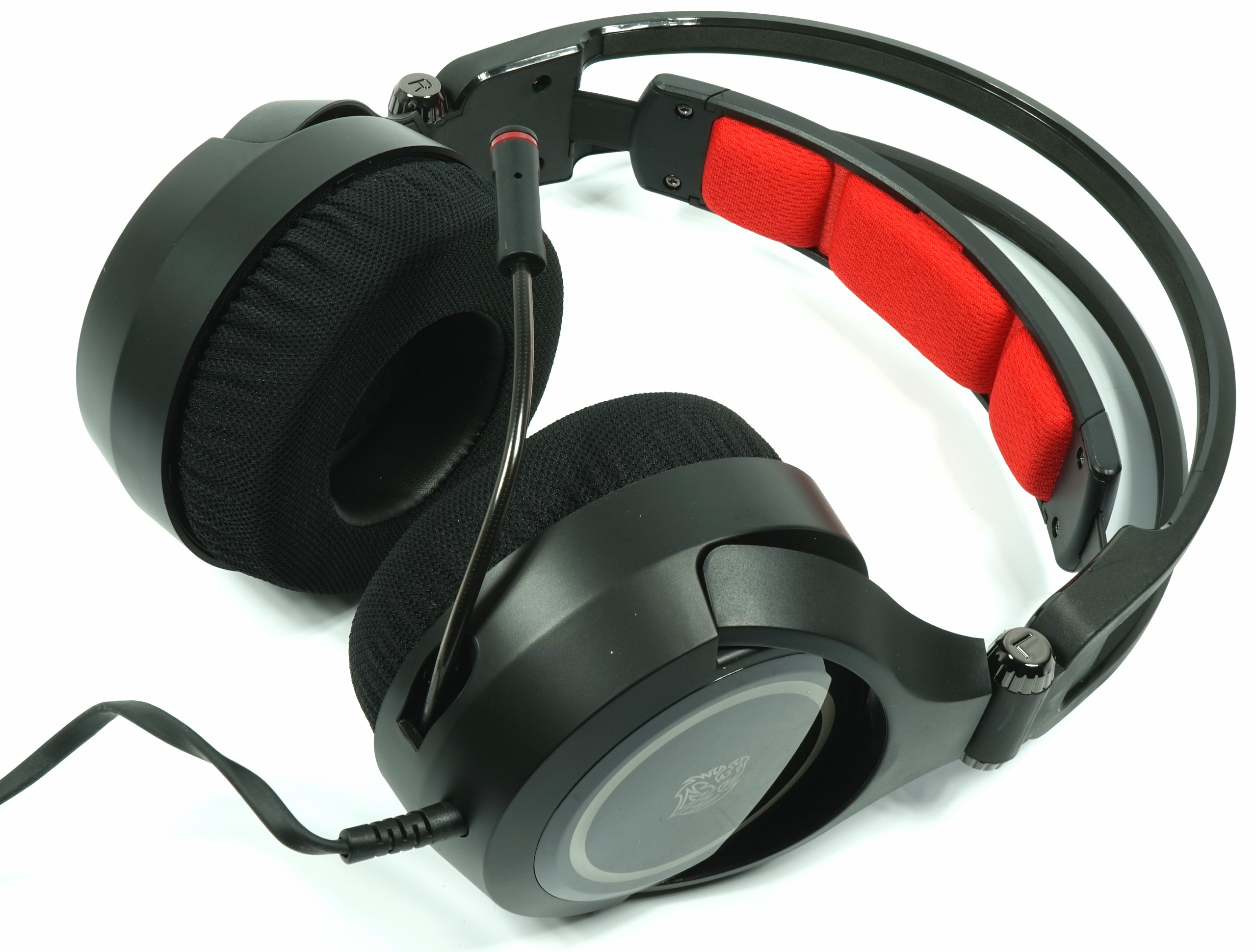 |
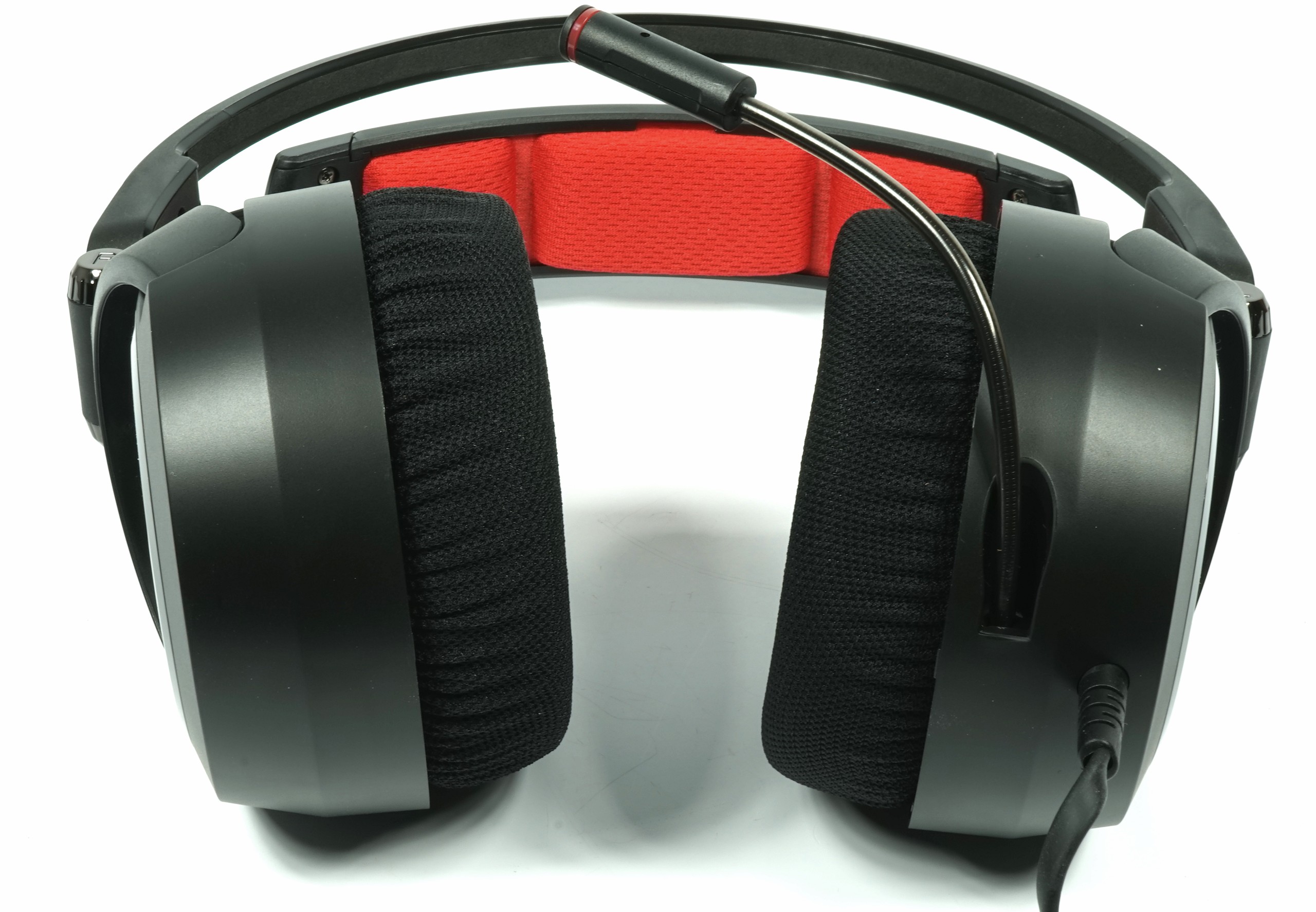 |
The cable is rubberized and flat. The entire cable entry, including strain relief, are usually solved in class and seem to be sufficiently sized at first.
Comfort
The adjustability is by and large good. Length, as well as horizontal and vertical rotation options bring the ear pads into the correct position. This is quite well solved and even above average comfortable.
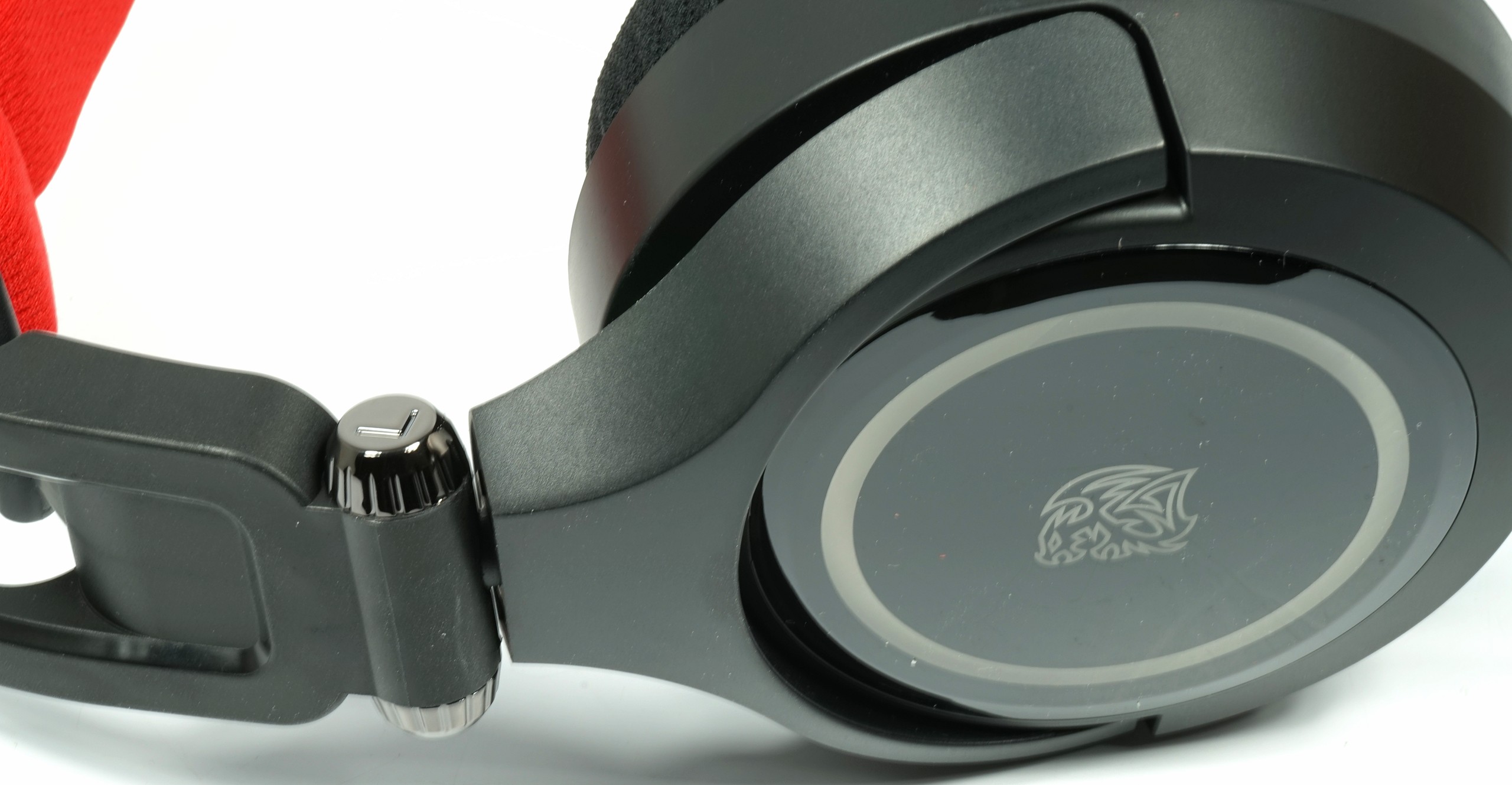
The headband can be pulled out far enough and the upholstery is pleasantly soft and never presses. However, the pressure becomes a little too big with very large heads and from hat size 60 you have to really test, depending on the head shape, whether you can still cope with it.
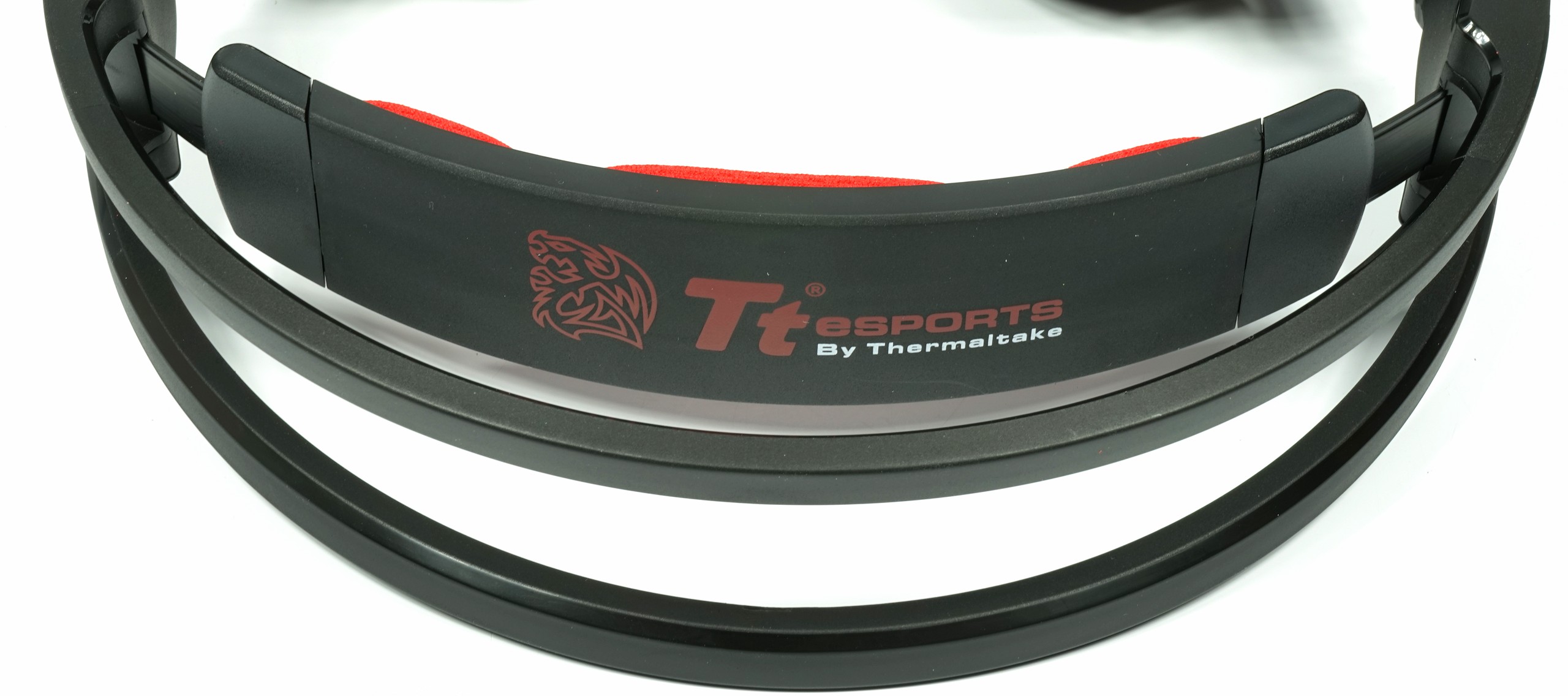 |
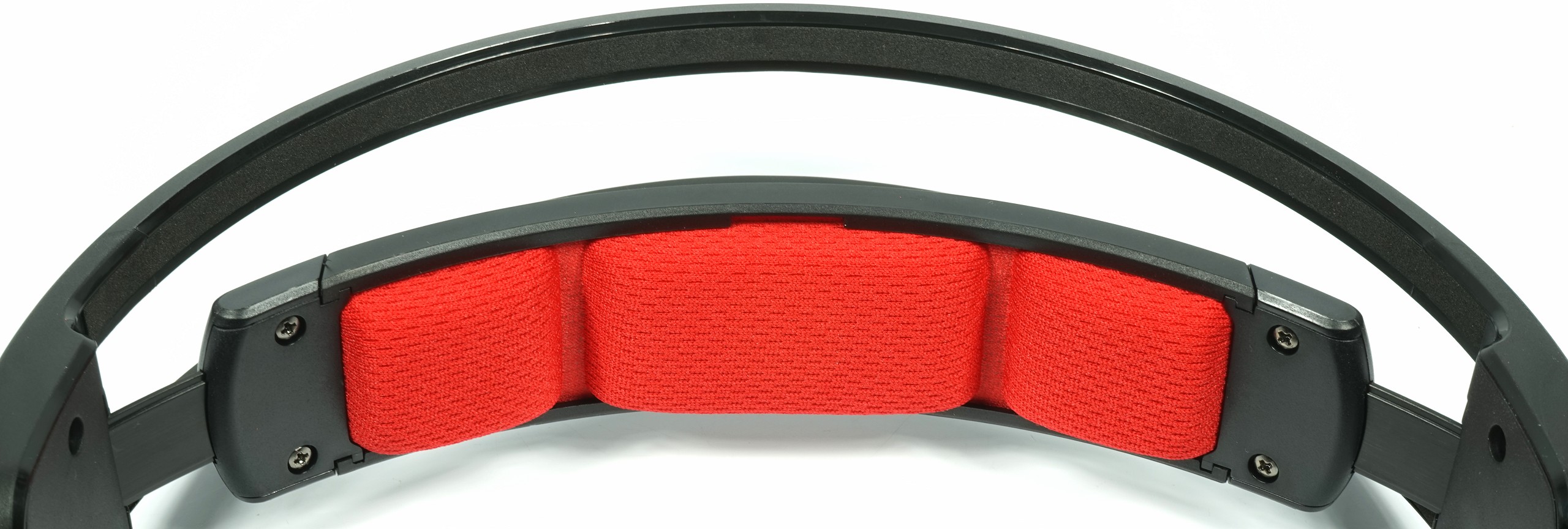 |
The very far-standing ear pads of the completely closed system fit over normal-sized ears, but with sail and elephant ears in jumbo size it becomes additionally tight and even presses. Eyewear wearers will experience this painfully when a big head comes into play.
The foam used in the upholstery is often a rescue in distress, as it can also be powerfully reshaped to eliminate pressure points manually. That would make it 1-1, although it was certainly not intentional. Finally something that could be described as a memory foam in good conscience. Usually only an indefinable cold foam mass is offered for such a thing. The upholstery is only clipped in with a plastic ring, which requires great care when removing them, so as not to break off the small noses.
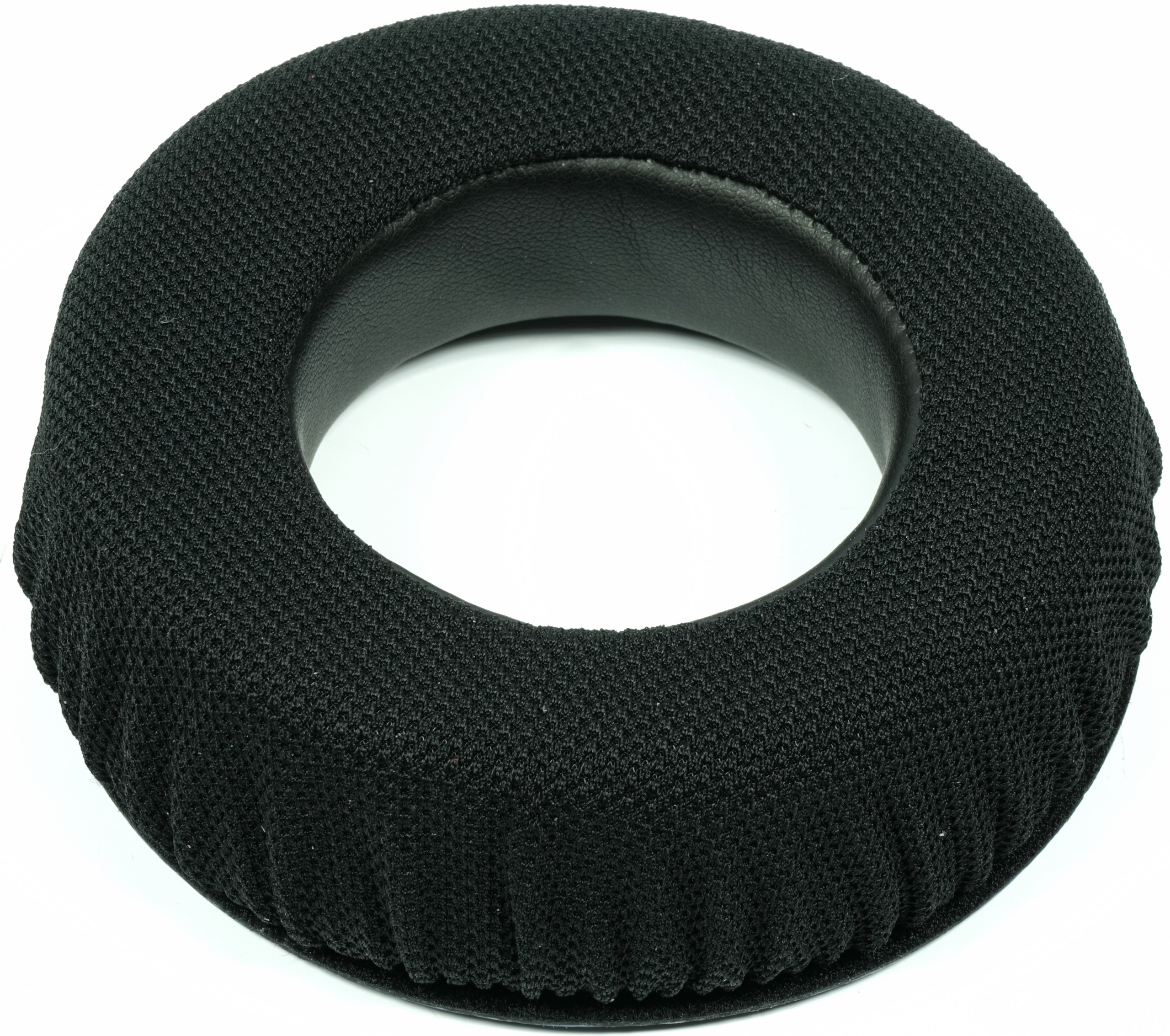 |
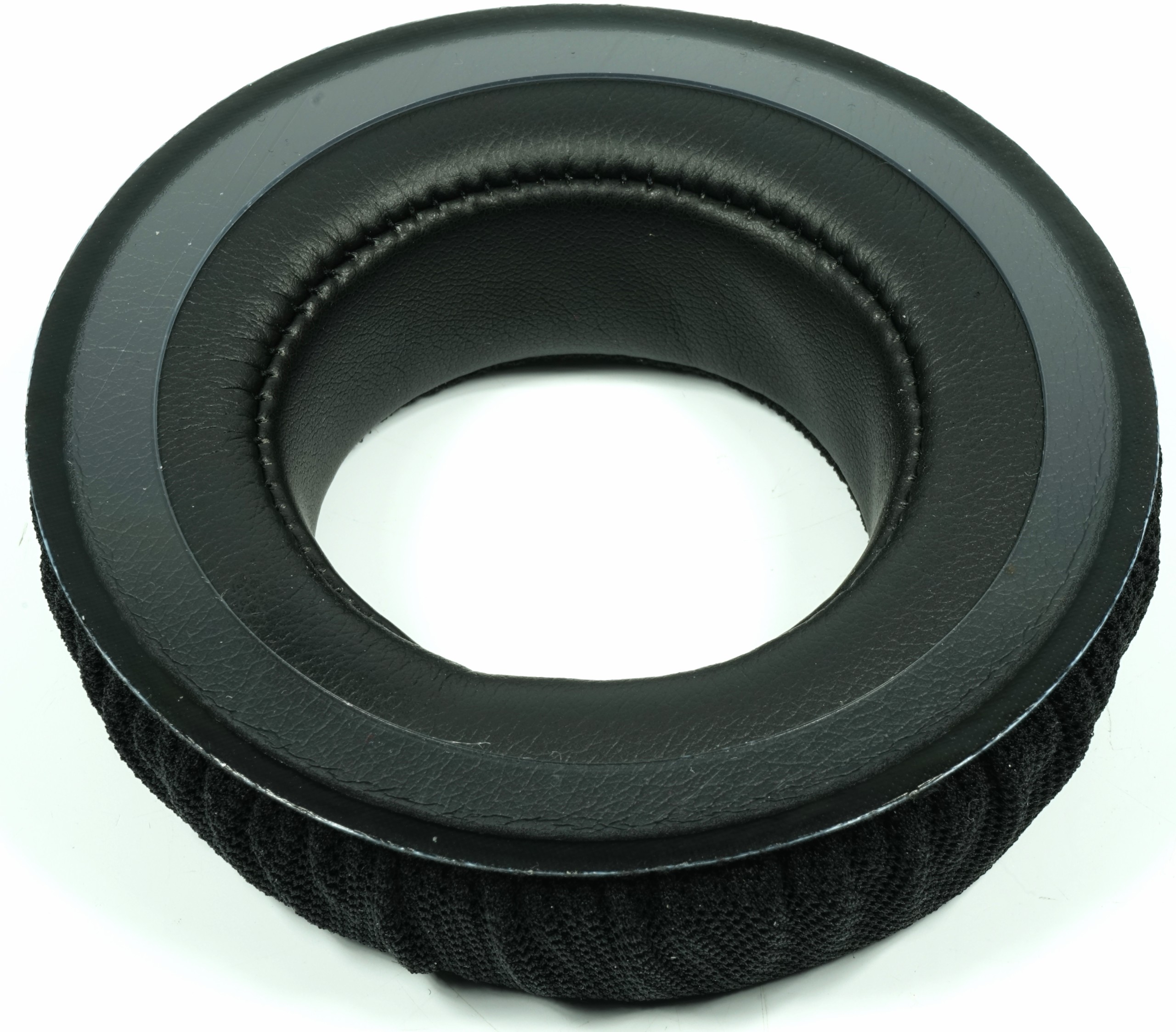 |
In the end, the impression remains that the 340 gram (net without cable) heavy headset looks more powerful than it wears at the end. It's not really easy, but at least in terms of weight it shouldn't fail in the end, because there are other heavyweights who don't just apply optically fat.
Functionality and connection
The sound solution integrated in the cable is used to control the whole with its two probes for the lukewarmness and the switches for the sound (EQ modes, surround on/off).
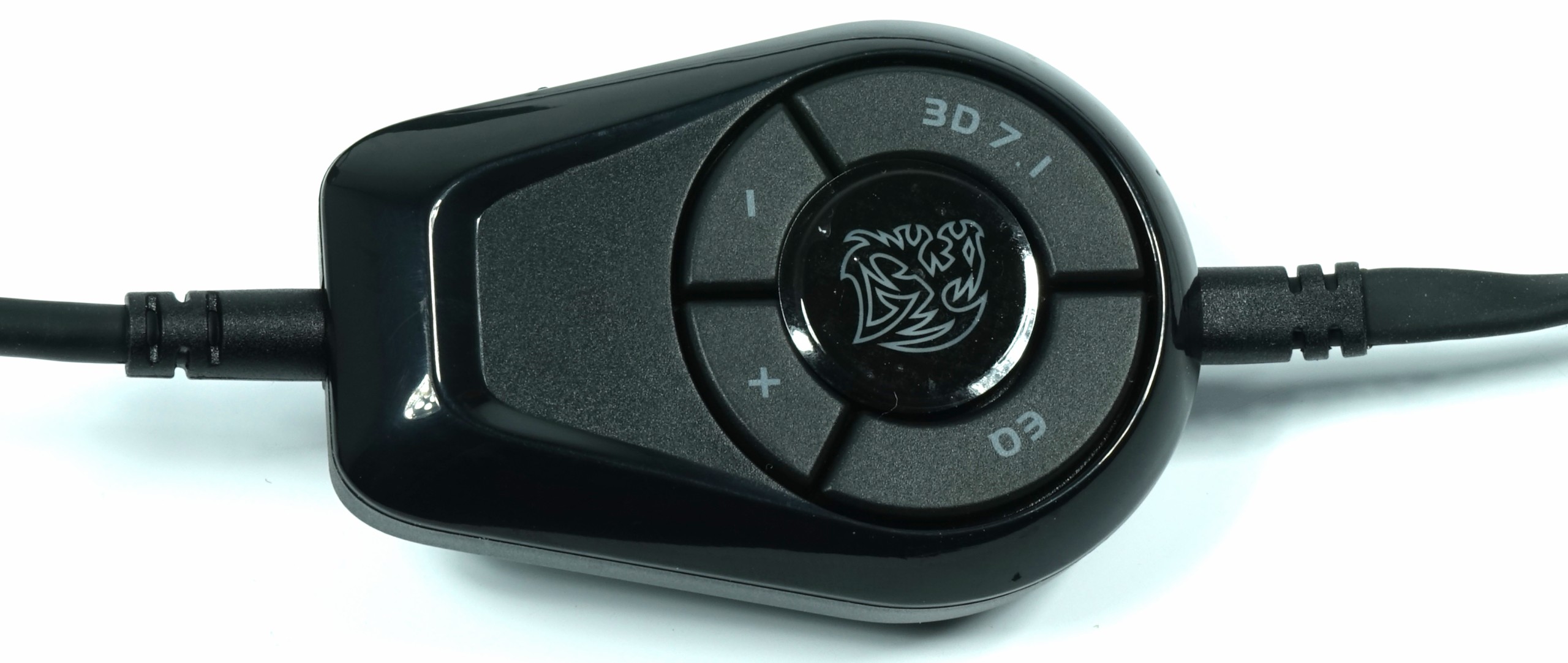
You can also attach the control unit to the shirt by means of a clip, which, however, gets a lot of fiddly, if you e.g. then searches for the side-mounted Mute button.
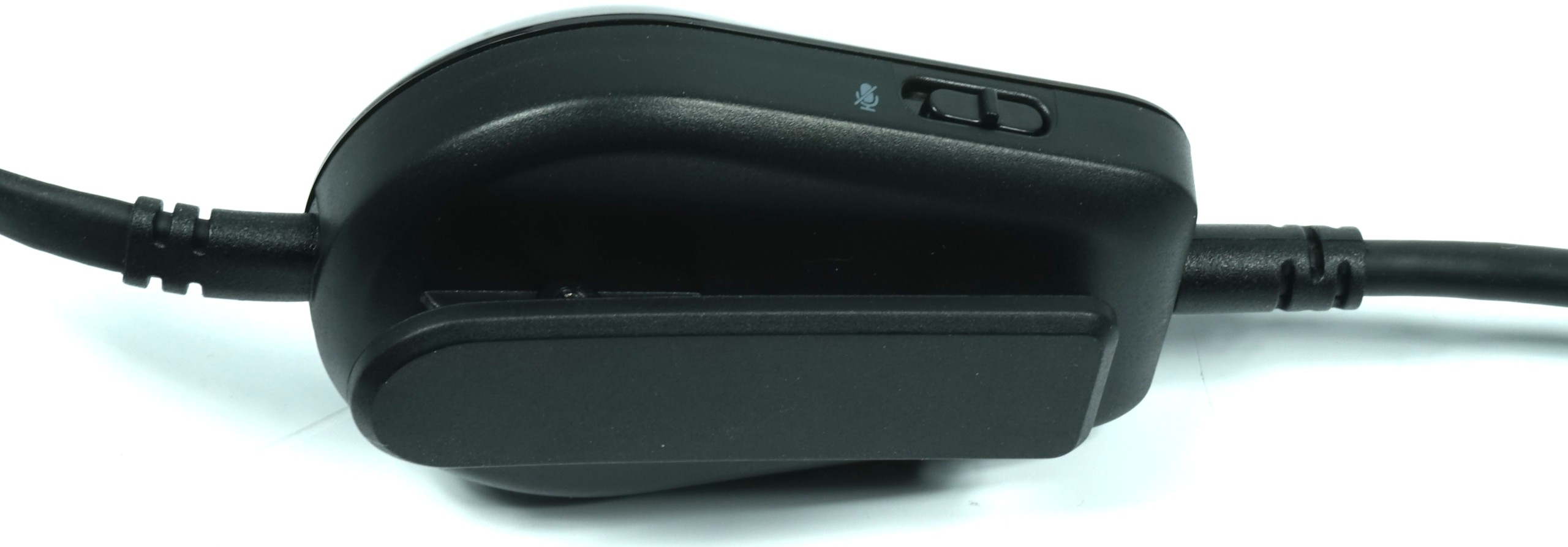
Inner structure, drivers and sounding
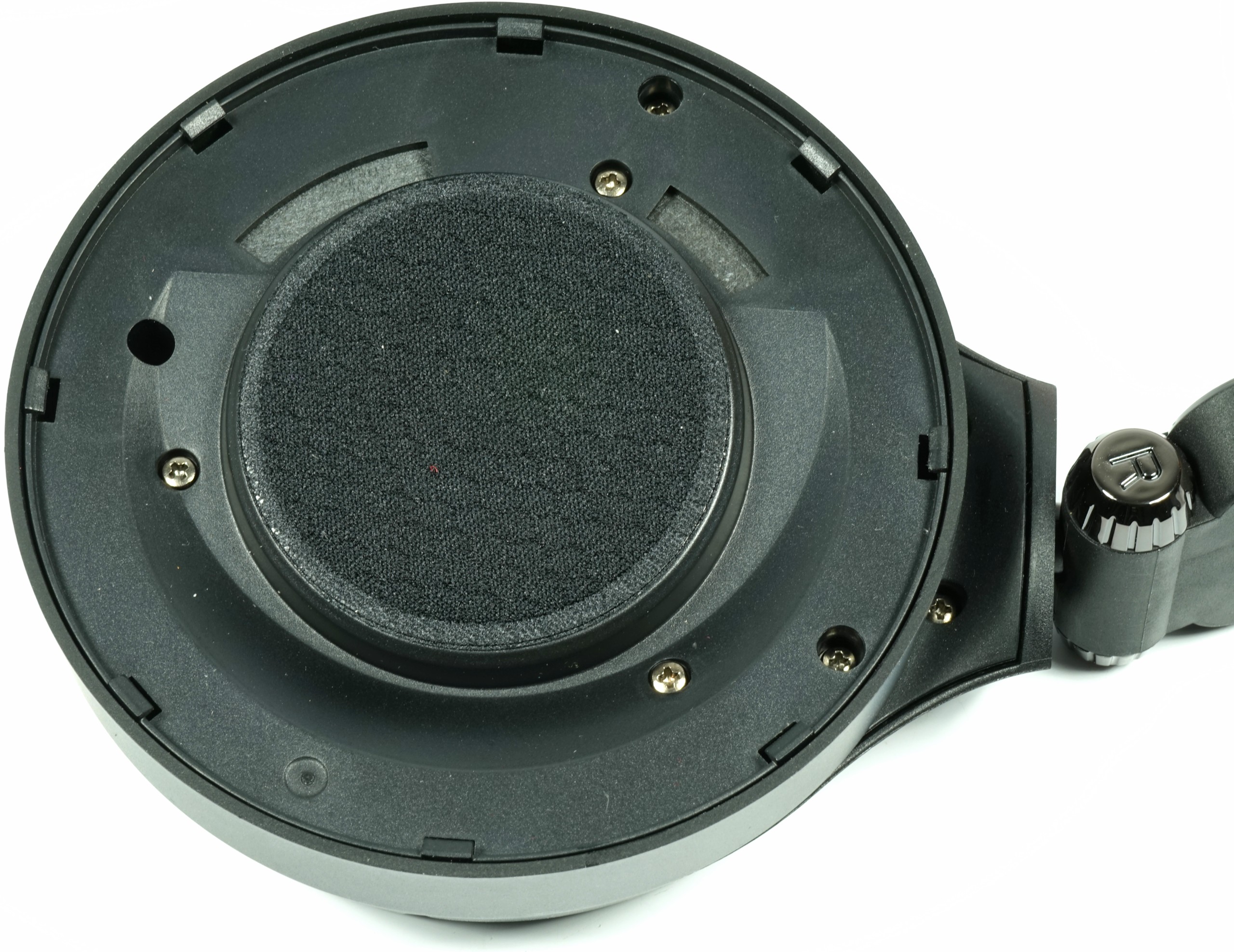 The 50 mm neodymium driver sits in the slightly slanted upper shell of the shell and has been pressed and glued by the manufacturer on the inside. Since you can unscrew this bowl, we have of course continued our expedition and also undertook some small sound experiments.
The 50 mm neodymium driver sits in the slightly slanted upper shell of the shell and has been pressed and glued by the manufacturer on the inside. Since you can unscrew this bowl, we have of course continued our expedition and also undertook some small sound experiments.
In addition, the driver from behind was covered with another shell in the original, so that the inner volume is significantly reduced. This inner shell then also significantly lowers the bass level, as our measurements will show. Without this shell, however, the bass is far too dominant and muddy, so that after further tests we screwed it on again.
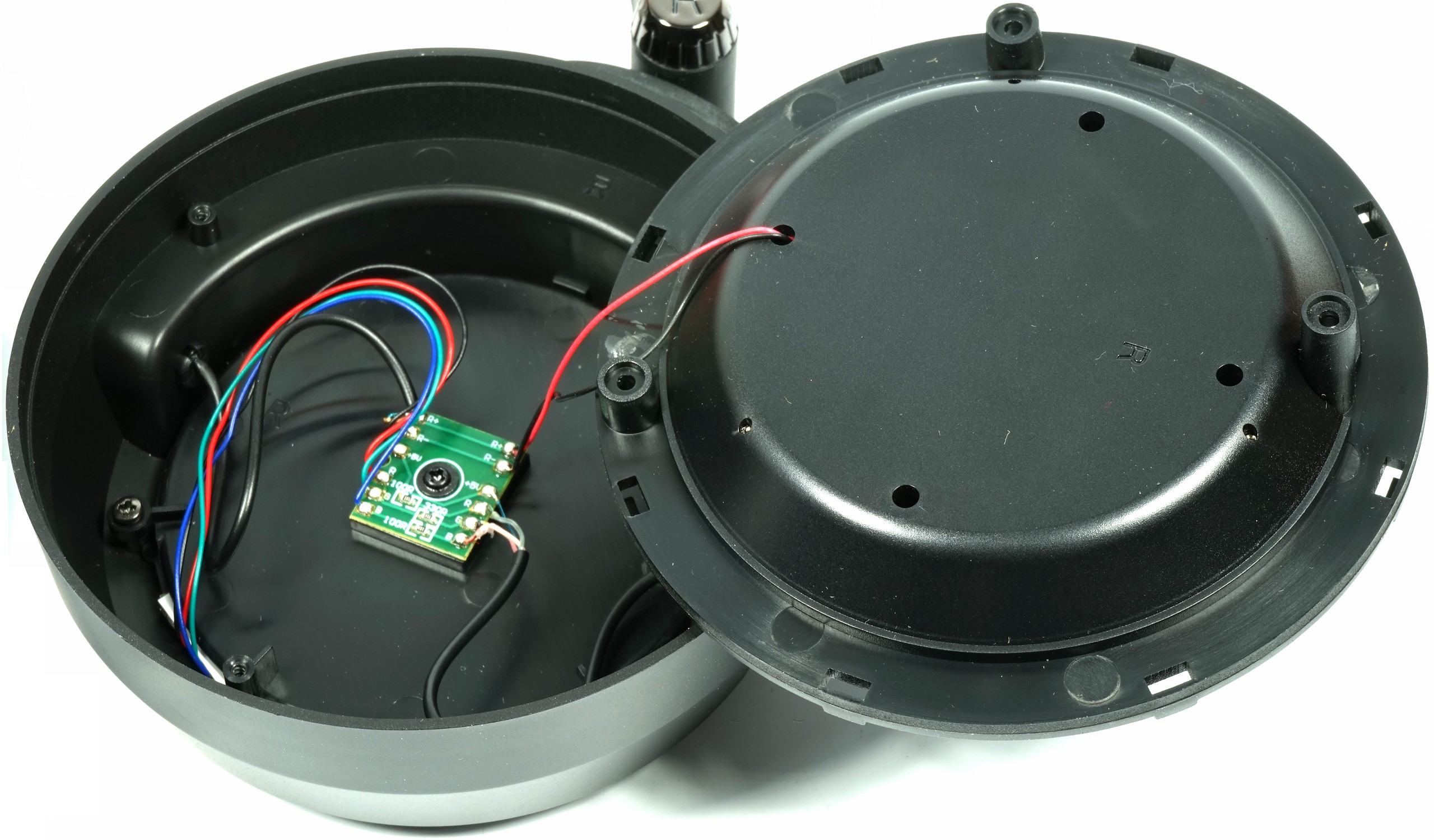 |
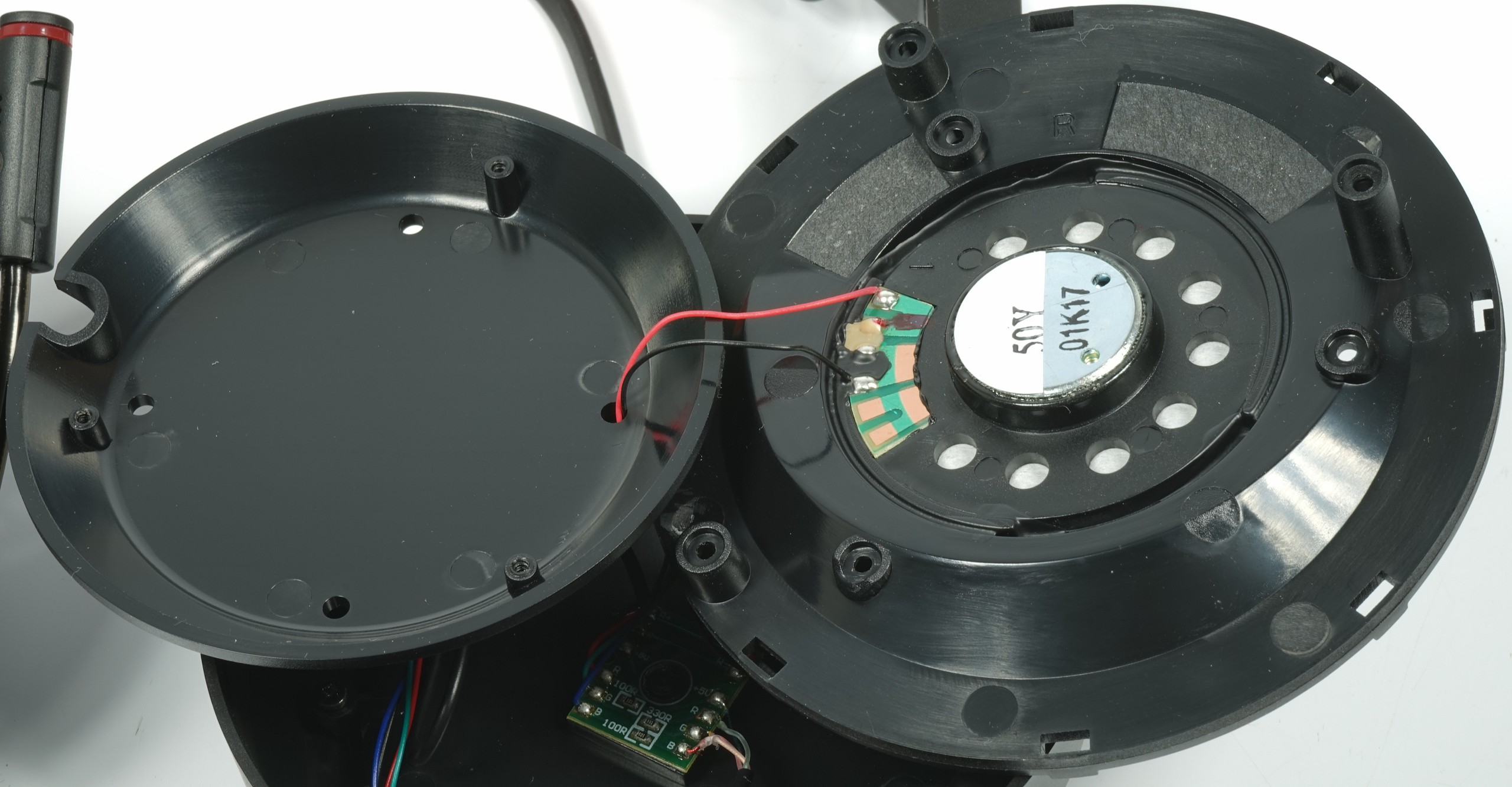 |
Nevertheless, if you want a little more bass without software, you could alternatively remove this inner shell, but in return you would have to dampen the story with suitable material. However, this will not be easy in the left shell with the sliding microphone.
The drivers used also produce an extreme lift from the upper middle (we'll see right away), so that you could only get the right to the tweet by sticking thin felt on the opening above the drivers. This tinkering can also be saved by the targeted use of the software, as we will see in a while.
However, we would like to make it clear that all these manual changes to the object are NOT subject to the warranty or warranty, even if the screws do not carry any seals.
Microphone
The microphone with ball characteristics sits in a microphone arm in a gooseneck shape, which can be easily pushed in or can pull out. This element is almost identical to that of the older Kingston and Steelseries models, and the built-in microphone does what it is supposed to do. Noise-cancelling is passive and not always absolutely sovereign.

The sound and the comprehensibility of speech are just fine for a headset of this price range, but nothing more. Whether the microphone tip lights up when the microphone is activated or not does not add value to the actual functionality, but you simply forgot to implement it. An activated mute function can only be recognized by the switch position at the control unit.
The frequency curve is not free of resonances and break-ins, as well as quite bass-heavy. Measured with pink noise in decency of 1 meter in front of a broadband reference speaker. Especially the tip at 100 Hz makes the upper bass swell and above all deeper voices appear too voluminous. In return, the highs get to the low-flyer and -12 dB drop at 10 KHz are also not really the crusher. If one takes the near field at a usual distance during the measurement, no different picture results.
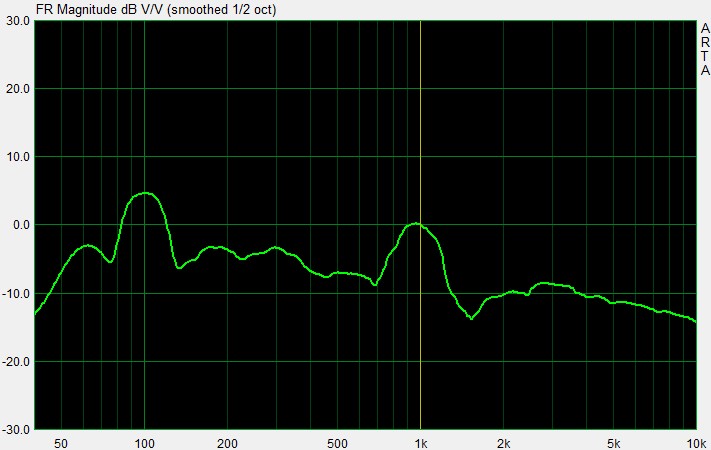
Software and driver settings
The software is the typical clone-sheep-dolly variant of the standard USB sound solutions. Who at the Equalizer & Co. sub-menus can only be reached by double-clicking on the icon (e.g. the loudspeaker). At least that is what we should know.
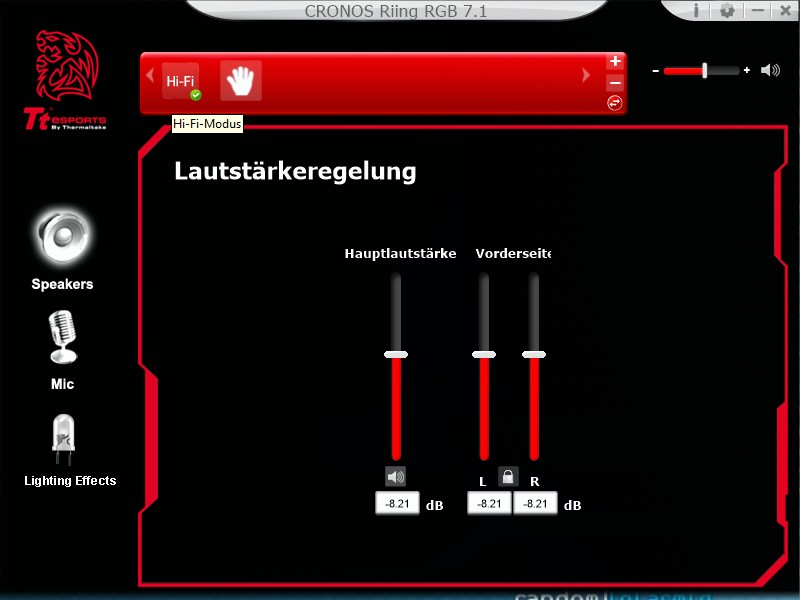 Volume Volume |
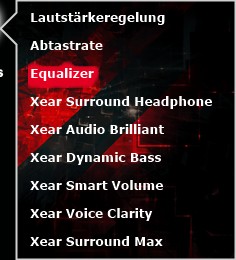 |
In addition to RGB effect control and microphone levels, there are many things to discover and use that you might or may not need, depending on your listening experience and preferences. We will write about the equalizer in more detail, because in the end it wasn't quite without it.
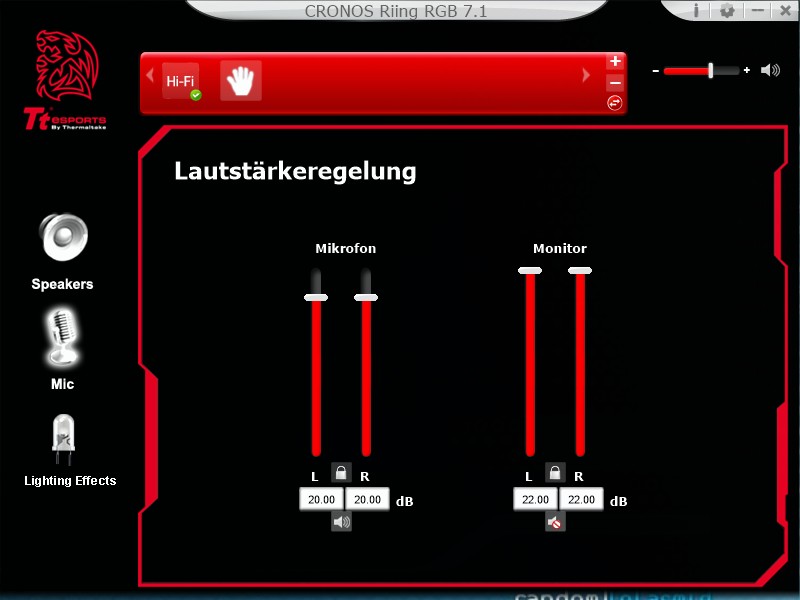 Microphone Level Microphone Level |
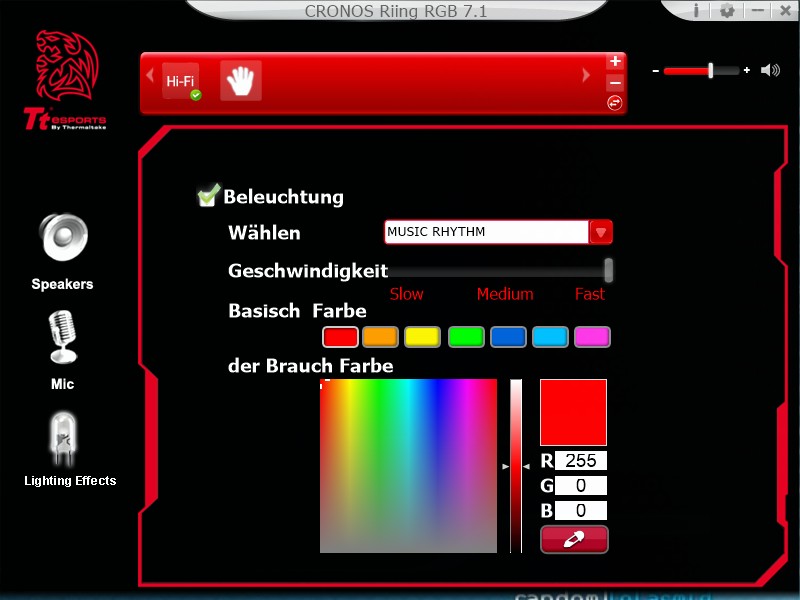 Rgb Rgb |
Before we get to the sound check and the measurements, however, quickly again the technical data in table form:
































Kommentieren